One of the best ways to explore one of Southern Colorado’s most iconic mountains, the Spanish Peaks, is on the Highway of Legends Scenic Byway. The loop guides you through mountains, expansive valleys, historic towns, old mining camps, and ancient geological formations unique to the area.
So, buckle up for a road trip and use our four-day itinerary through the Spanish Peaks Region to explore some of southern Colorado’s most beautiful treasures.
Note: The Highway of Legends Scenic Byway is a loop, that typically is driven counterclockwise, beginning in Walsenburg, heading west, and then south towards Trinidad. But we suggest doing the opposite. No matter what route you take you will have fantastic views and scenic landscapes to admire, but this way you can see the Spanish Peaks and Sangre de Cristo mountains in front of you the entire time.
Day 1 on the Highway of Legends

To begin your journey, continue to Trinidad first, via I-25. Between the towns of Walsenburg and Trinidad, there are several historical sites you can visit, including the town of Aguilar and the Ludlow Massacre site.
Aguilar
Aguilar, dubbed the Little Chicago, is a sleepy town that has a hidden past filled with bootlegging and mafia connections. The notorious gangster, Al Capone, was widely known for his crimes in Chicago, but he came to southern Colorado to hide out. During prohibition, he made a name for himself bootlegging in the town of Aguilar.
Today, you can walk over underground tunnels that were used for moving goods and quick escapes.
Ludlow
Ludlow was once the site of a massacre that ignited a nationwide conflict between the working man and large corporations. Miners were frustrated with low wages and horrible working conditions, so finally, they had had enough. The strike ended in murder, destruction, and six months of battle. The deadly massacre would change labor in the U.S. forever. As you exit, you can follow the signs for the monument at Ludlow.
Trinidad

The next town, Trinidad, is a great place to stay for the evening and spend the night. What began as a stop along the Santa Fe Trail over 200 years ago, over the years, Trinidad has begun a transformation into a hub for the arts, culture, food, and outdoor recreation. From its state parks to its historic downtown, here are some of the top things to do in Trinidad.
Top things to do in Trinidad
- Take a stroll downtown along Commercial Street, a paved-over section of the old wagon trail, the mountain route of the Santa Fe Trail.
- Admire the Victorian-era homes that dot the streets of Trinidad. During its mining boom, Trinidad welcomed immigrants from all over the world, from Italy to Ireland. Making a home here, the immigrants brought with them the elegant features of Victorian homes.
- Trinidad History Museum features exhibits Trinidad’s history and the role it played in the American West. The museum is comprised of four buildings, including the historic Bloom Mansion and Baca House.

- Take a hike in Colorado’s latest state park, Fishers Peak State Park. Only a portion of the park is currently open with several trails to help get you acquainted with the park. While you can’t hike the iconic peak yet, the Challenge Trail will take you to some amazing views of the peak and valley floor below.

- Watch the sunset at Trinidad Lake State Park. Enjoy beautiful views of Fishers Peak, forested shorelines, sandy beaches, and more. But there is more to this lake than what meets the eye. Lurking below the lake, are the remnants of the town Sopris that used to occupy the area.
Due to repeated flooding of the nearby Purgatoire River, the town would soon be no more. In 1955 the dam was built to mitigate the flooding, and everyone in town was kicked out and made to disperse. Today, the houses and structures are still resting at the bottom of the lake.
Read about the best hotels in Trinidad
Day 2 through the Spanish Peaks Region
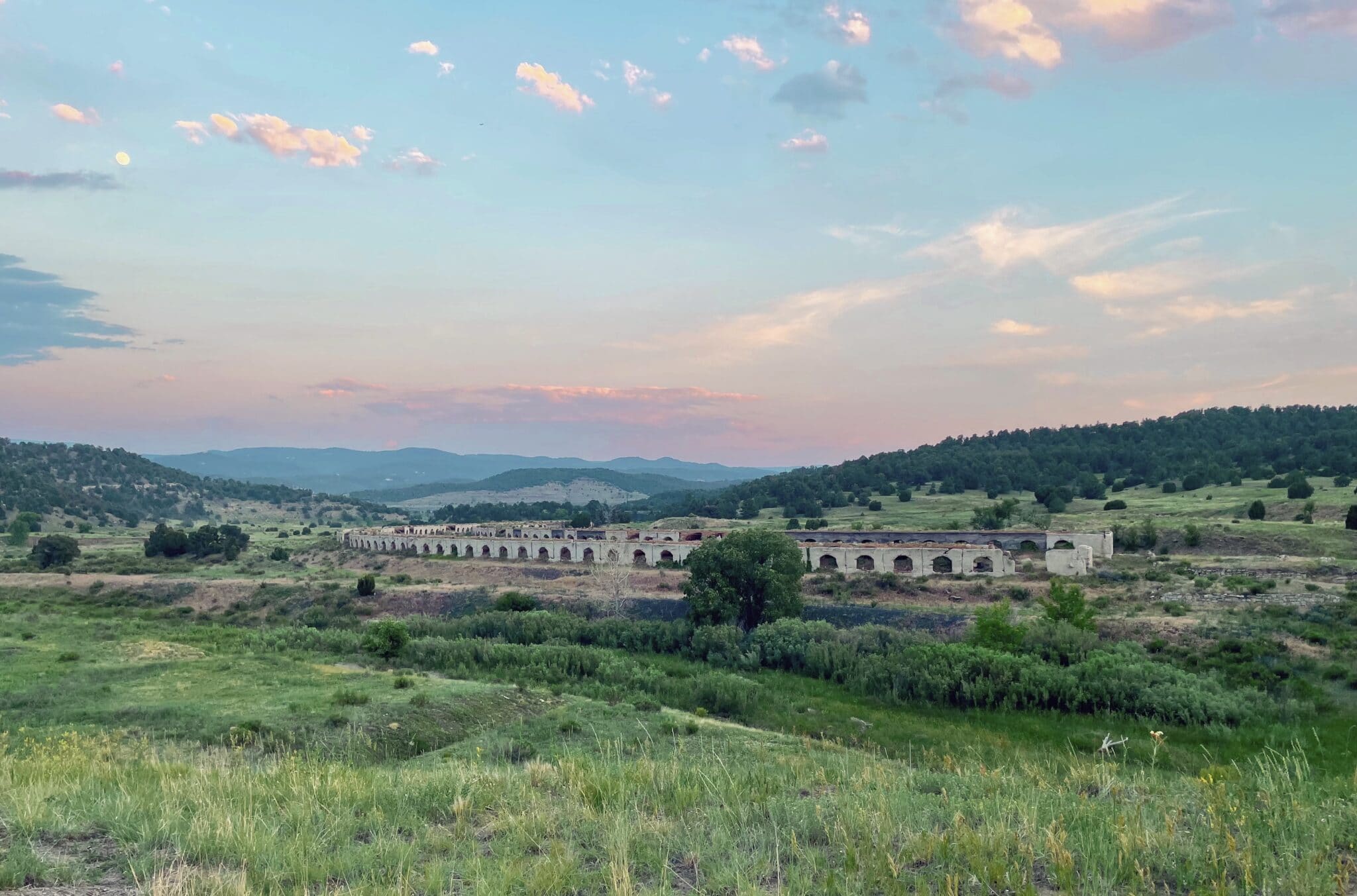
Cokedale
As you head west along HWY 12 be sure to make your first stop at the historic town of Cokedale to see the coke ovens. What looks like a structure from the Roman Empire is actually deserted alcoves called coke ovens that were used for smelting coal (an extractive process after newly mined coal) from the nearby mine.
The town itself was built for the miners’ families, staying in place even after the mine left town. Thus, making it one of the most intact mining camps in Colorado. Placed on the National Historic registrar, you can take a quick drive through town to see the historic mining homes and the local museum.
Stonewall
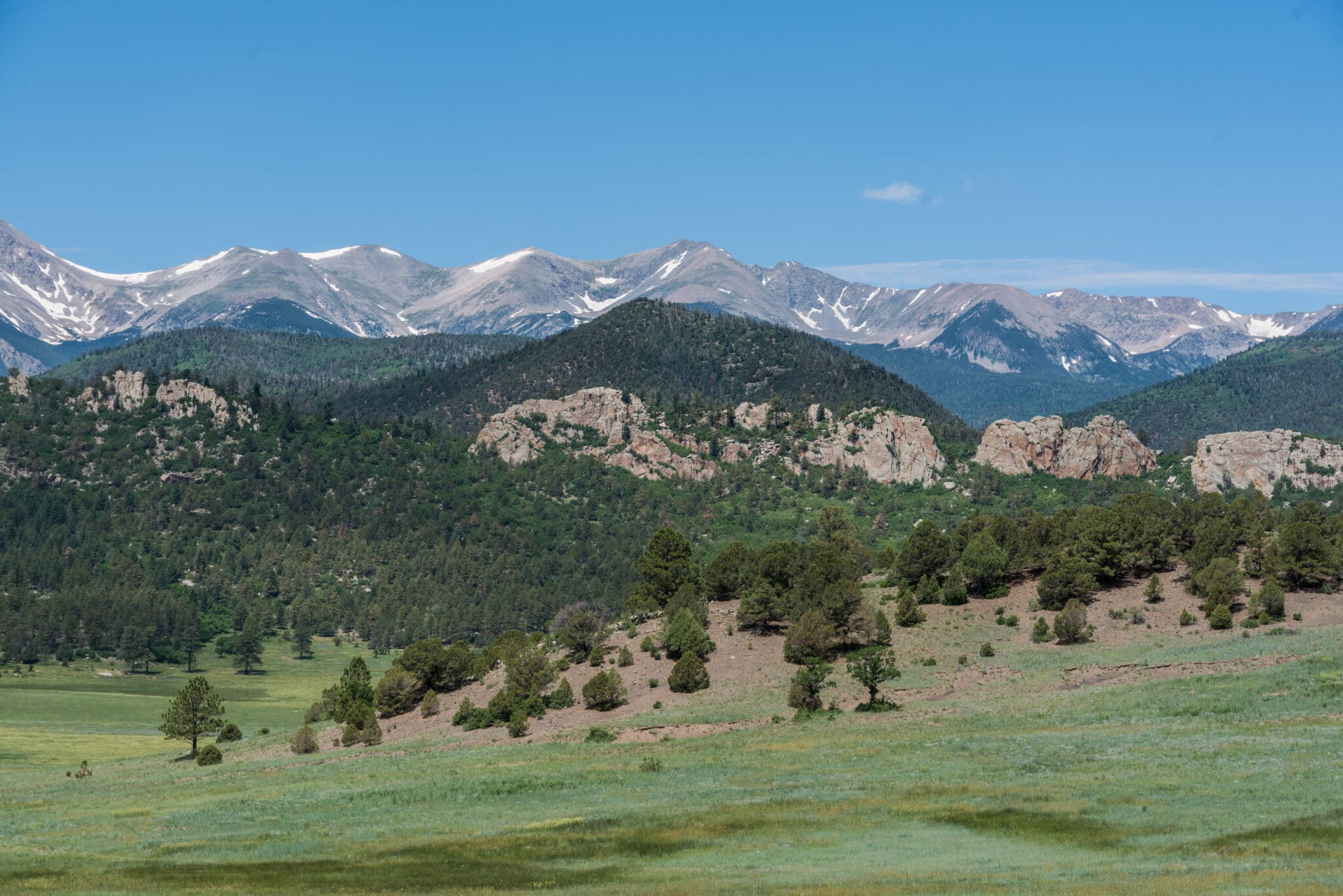
As you continue west, you will soon approach the town of Stonewall. As you reach the center of town, you will see the stonewall the town is named after. This structure is the Dakota Sandstone Formation, the same formation that shapes the Front Range near Denver. The wall runs from Canada to Mexico and the town of Stonewall is located at a pass in the rock, where the Purgatoire River cuts through the center.
There isn’t too much to do here other than admire the landscape. If you happen to be in this area around sunset, take a little detour along County Road 13 for beautiful views of the Dakota Ridge and Sangre de Cristo mountains in the background.
But before making a stop here, be sure to stop and stretch your legs and grab some tasty BBQ at the Picketwire General Store. An interesting fact, the old house located behind the store is said to be once owned and occupied by Al Capone.
Monument Lake and North Lake
For those looking for a good fishing spot or just a place to stop and take a break, the next few stops at Monument Lake and North Lake are perfect for doing just that.
Monument Lake
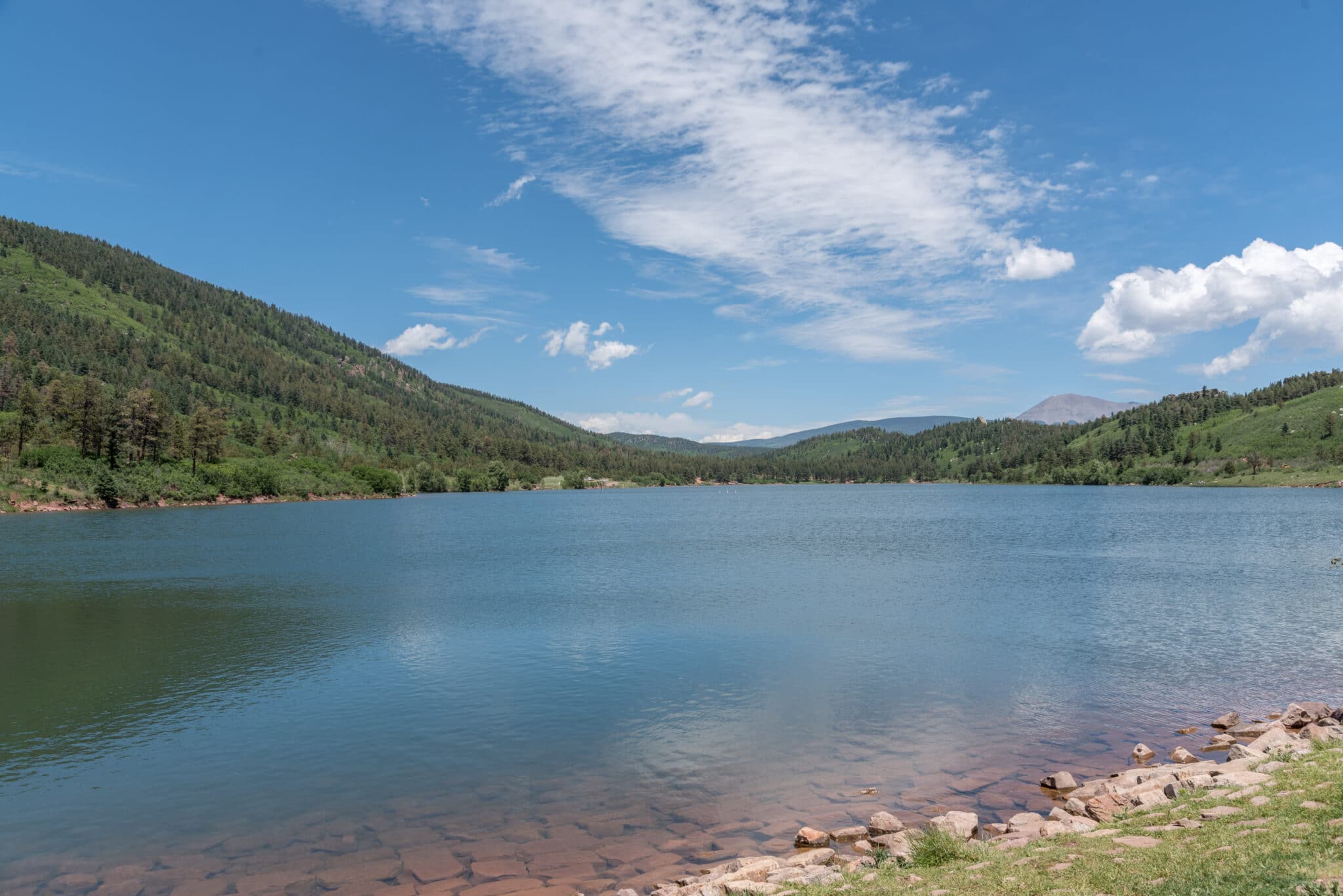
The name Monument Lake came from the large sedimentary stone formation that once rose from the center of the lake. But today, you won’t see this landmark. Due to erosion, the monument crumbled into the water in 1999. The lake resides on a 368-acre private property where visitors are invited to fish, boat, and enjoy the wildlife. The resort also features cabins, camping, RV spots, and a restaurant.
Another notable feature of the resort is the historic adobe buildings that were built in the 1930s as part of the Works Progress Administration Act. There is a resort fee to access the lake and property for the day.
North Lake
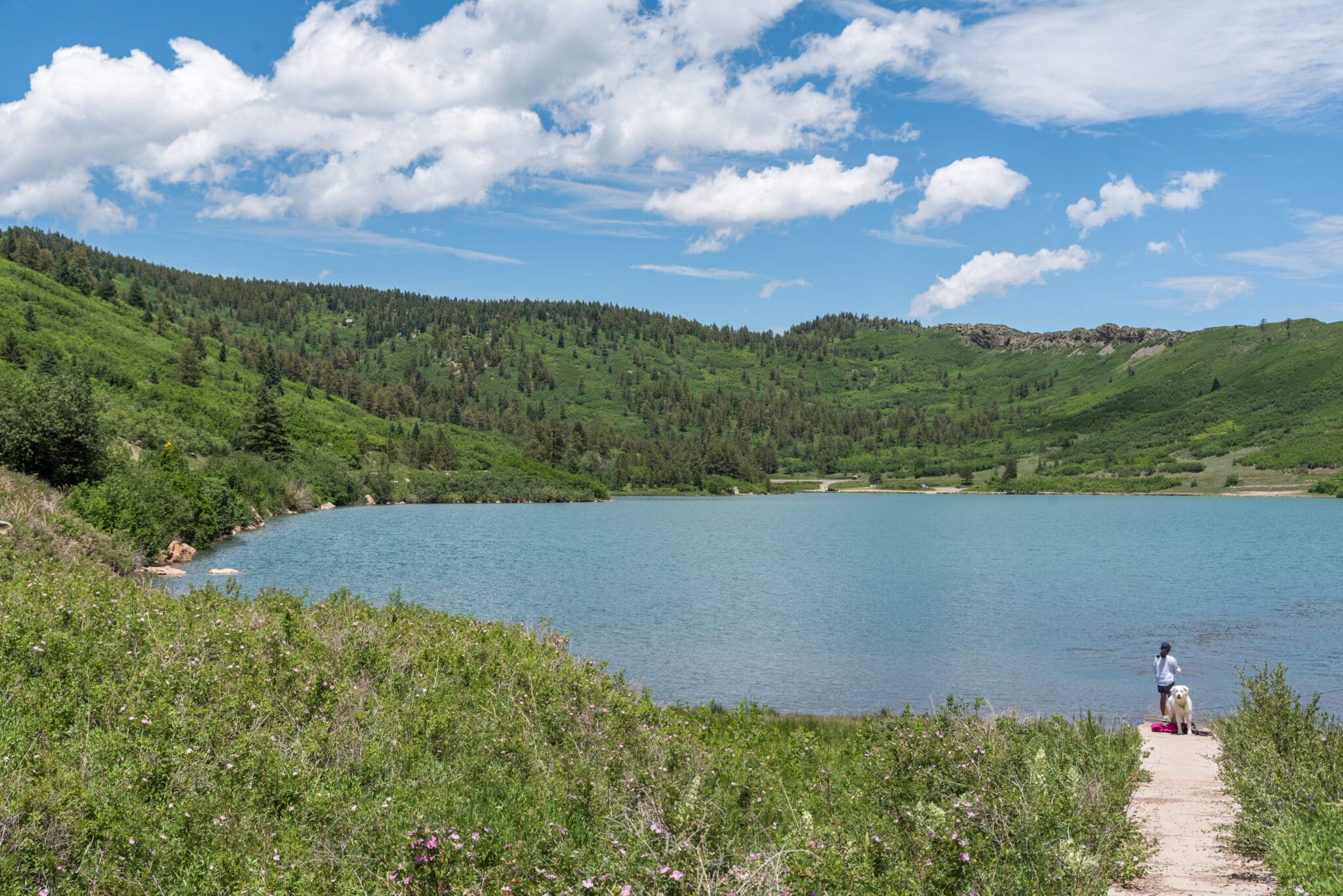
Next, you’ll come upon North Lake. Originally built to provide water to Trinidad, today it is a hot spot for anglers, both skilled and novice. Fishers will find brown, rainbow, and brook trout. While there is no cost to fish at the lake, you must obtain a fishing license.
Cuchara Mountain Pass

As you climb higher and head north, you drive over the Cuchara Mountain Pass. Reaching nearly 10,000 feet, the pass is legendary for its scenery and wildflowers. Be sure to stop off at the Farley Overlook. Here you can enjoy beautiful views and an abundance of wildflowers in the late spring, and early summer months.
From here, you can choose to continue along the road up to Cordova Pass. Not drive-able in the winter, summertime is perfect for exploring the several trails that leave from the dirt road, such as the West Spanish Peak Trail.

This is the trailhead leading to the summit of the West Spanish Peak. The roughly eight-mile out-and-back trek takes you to the top of the 13,625-foot peak. This is a well-known day hike, but it is advisable to start your journey early in the morning with plans to be down the mountain at noon to avoid summer thunderstorms.
Cuchara Mountain Park
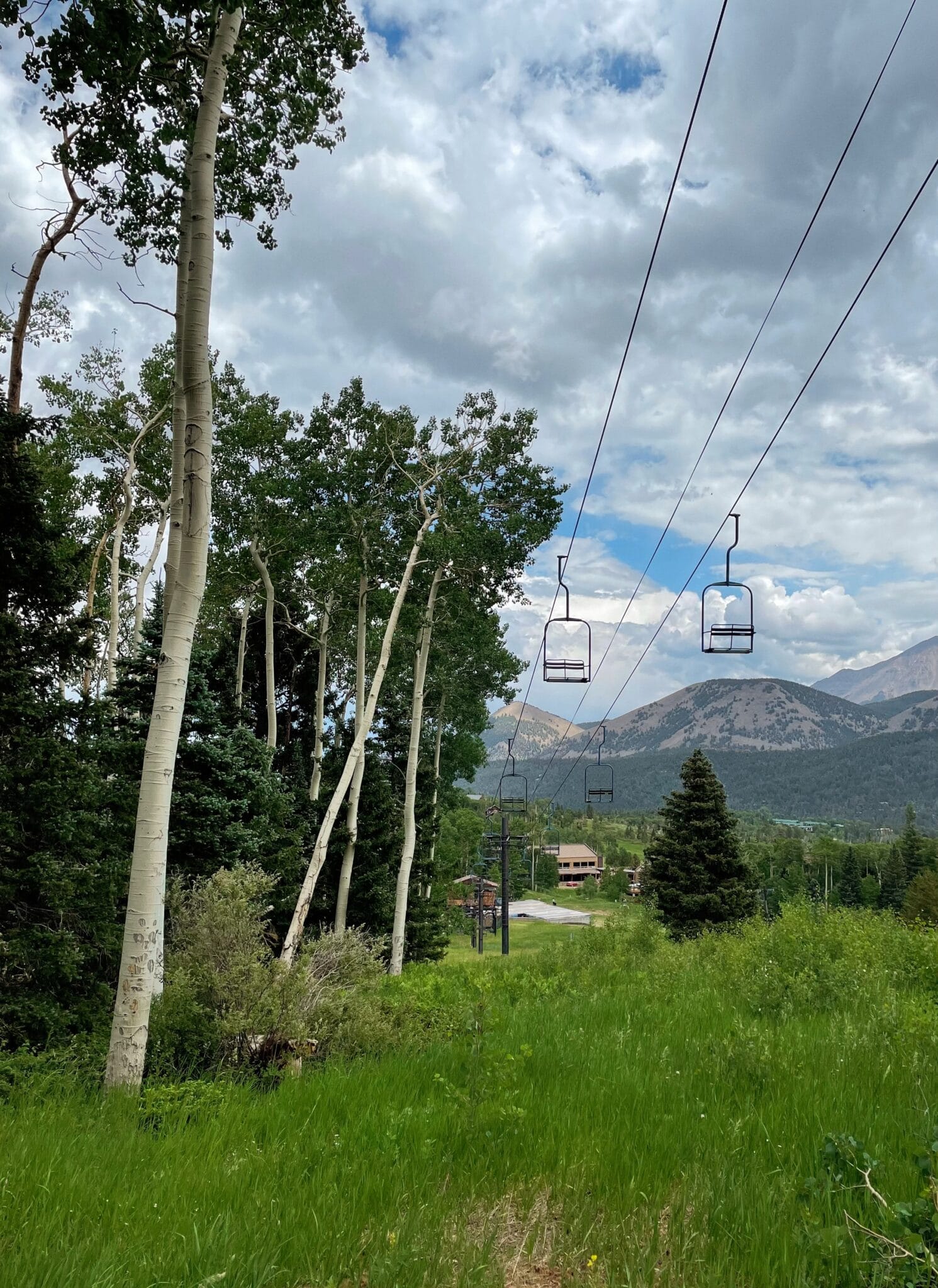
What was once a privately owned ski resort, the Cuchara Mountain Park is now a Huerfano County Park, open to the public. In the summer, enjoy a round of disc golf, miniature golf, hiking, and access to Bear and Blue Lakes in the area. Future plans for the park include a bike park with pump tracks and a skills park.
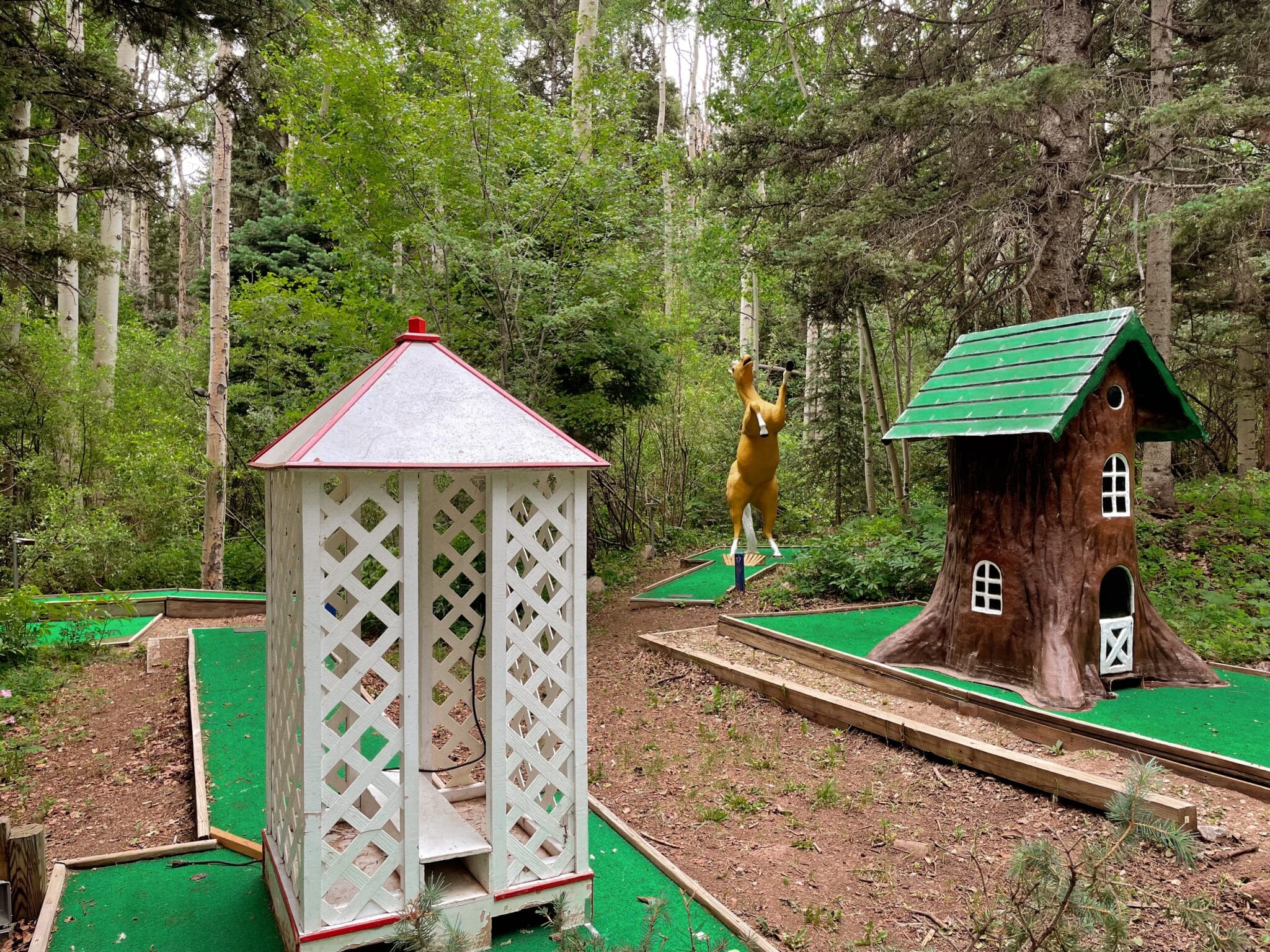
In the winter, the park is best known for its “human-powered recreation,” meaning to enjoy the ski slopes you have to walk up and ski back down. But, in recent years there have been resounding efforts to get at least one of the old ski lifts up and running again.
Cuchara Village

Rounding out your second day, plan to spend the evening in Cuchara Village. A great example of a turn-of-the-century Colorado mountain town, the picturesque village is surrounded by the San Isabel National Forest with the Cucharas River cutting through the center.
Cuchara Village features several lodging options, shops, and restaurants. The Cuchara Inn is a nice choice. It’s located in the center of town, with the Cuchara’s River Bed and Breakfast nestled on the banks of the river at the end of town.
Don’t leave without having drinks and dinner at the Dog Bar. Ask anyone in town or nearby where to go for a good beer and burger, and they will likely point you to the Dog Bar & Grill, a favorite for both locals and tourists alike.
Day 3 along the byway

Scenic stops on the Highway of Legends
Rise and shine on day three and continue your adventures north toward the town of La Veta. But before reaching La Veta, be sure to take the time to stop and admire the several roadside landmarks that dot this highway.
First, you will approach the Dakota Wall, the same structure found in Stonewall. This Dakota Sandstone rises out of the ground from when it was turned on its edge during the last large uplift.
Next, you will see what is called the Devil’s Stair Steps. Unique to this area, radial dikes, like the Devil’s Stair Steps, are a geological formation created from hardened magma that flowed from the area’s ancient volcanos.
There are over 400 dikes radiating out from the Spanish Peaks and continue either above or below ground. The Devil’s Stair Steps are a fantastic example of one of the dikes that have surfaced above ground. The Spanish Peaks region is a world-class location to view these dikes.

Following along, you quickly approach another unique geological formation known as Goemmer Butte. The rock is a volcanic plug that formed after magma rose but cooled and hardened into the rock before it erupted. The structure is an iconic landmark in the area and marks the fact that you are traveling through an ancient volcanic field.
Tip: If you would like to get out and explore, hit the Indian Creek Trailhead – located along CR 421 between La Veta and Goemmer Butte.
La Veta
La Veta is the next major town along the Highway of Legends. What was once a popular trading post with the Francisco Fort, La Veta is now a small town with a thriving art scene. Home to several art galleries, including the SPACe (Spanish Peaks Arts Council) Gallery, and other artistic venues, La Veta is making a name for itself in the Colorado art community.

If you are looking for evening plans, be sure to check out the schedule at the La Veta Mercantile. The storefront sells local goods and gifts, but towards the back of the store, visitors will find a bar serving wine and beer, plus an area for live music performances.
Another popular visit is to the Francisco Fort Museum. Used as a trading post in the 1860s, the Francisco Fort still stands today in its original (resorted) structure. Inside you will find artifacts, photographs, and other treasured collections of the area’s early settlers. One of its prized possessions is the bar inside the original saloon. Transported from Walsenburg, the bar was originally owned by Bob Ford, the man who shot and killed Jesse James.
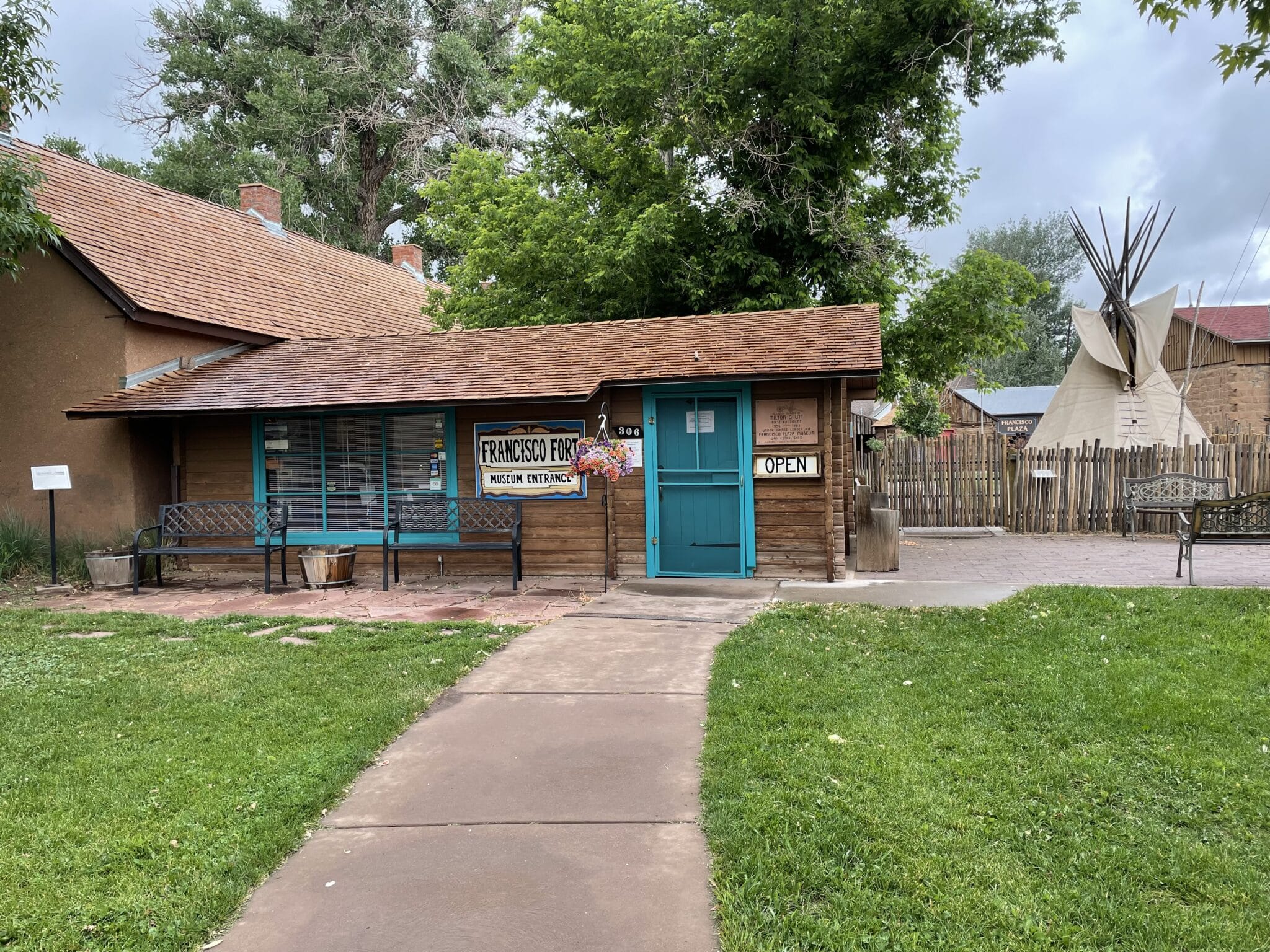
The La Veta Inn is a great place to rest your head at night. Centrally located, you can walk to anywhere in town including the nearby Ryus Ave Bakery for good coffee and breakfast food. Other notable restaurants in the area include Aly’s Restaurant and Legends on Main. Be prepared to make reservations.
Read about the best hotels in La Veta.
Day 4 colorful return to I-25
As you leave La Veta, you will begin to get a clear view of the Spanish Peaks. What makes these peaks unique from their neighbors to the west, the Sangre de Cristo mountains is how they were formed. Because you are driving through an ancient volcanic field, these mountains were formed by hardened magma over 25 million years ago, not the faulted and uplifted formations that make up most of the Rocky Mountains.
Lathrop State Park

On your final day, make your first stop at Lathrop State Park. As one of Colorado’s first state parks, Lathrop State Park is a great place to begin the end of your journey through the Spanish Peaks region. Open year-round, there is something to do no matter what time of year, from swimming at the beach to viewing bald eagles in the winter.
Walsenburg
The last major stop along the Highway of Legends is the historic coal town of Walsenburg. Known as the “city built on coal,” Walsenburg gained a reputation as a booming mining community in southern Colorado. Today, you can learn about its history on the Historic Downtown walking tour, which includes stops such as the Walsenburg Mining Museum, the Huerfano County Courthouse, and the Museum of Friends.
Beyond the town’s historic landmarks, Walsenburg is making a name for itself in the Colorado arts community with the Museum of Friends and the Walsenburg Mural Project.
Museum of Friends
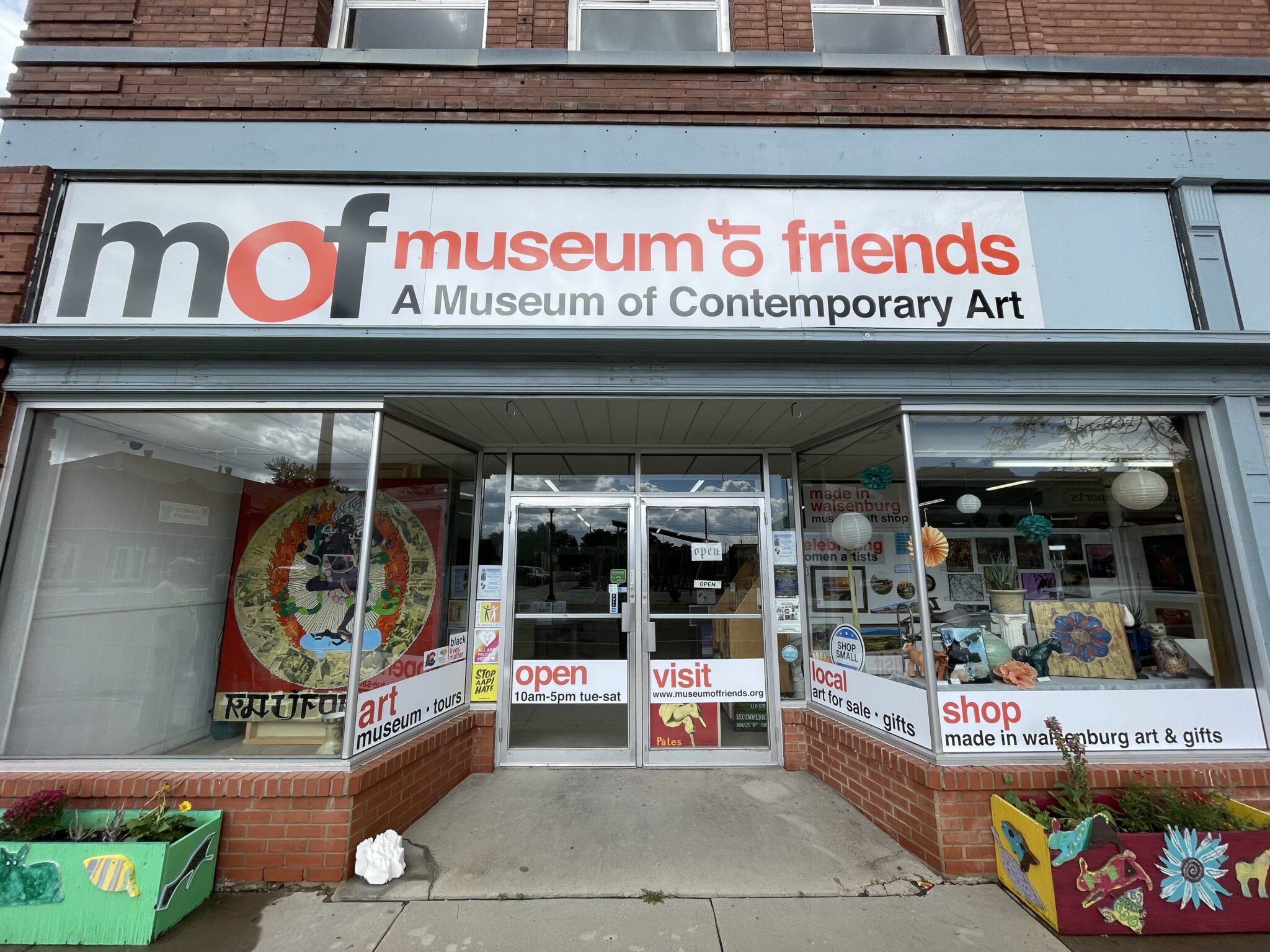
The building that once housed the J.C. Penny department store is now the Museum of Friends, a local museum dedicated to showcasing a well-rounded collection of modern art with both permanent and rotating exhibits. Its initial collection of over 600 pieces was donated through friends of the owners, Brendt and Maria Cocchiarelli.
And over the years, they have added near 1,000 more pieces to their collection. They are open Tuesday through Saturday, from 10:00 am to 4:00 pm.
Walsenburg Mural Project

Local artist, Yul Jorgensen, created FAROUT Murals, Huerfano County’s first annual mural program. Its first event was held in May of 2021, where six local artists came to Walsenburg to paint the alley between 5th & 6th. The project is a continuation of the work of Ken Martinez who painted, in collaboration with another artist, the iconic mural at Heritage Park. This mural sparked an interest in the community to continue to inspire others through art and community.
Read about the best hotels in Walsenburg.
Highway of Legends Audio Tour
One of the best ways to enjoy the Highway of Legends and learn about the historic places you see is by listening to the audio tour. Download the TravelStorys app and select Highway of Legends. The guided tour is easily played in your car and reads to you significant stories, places, and landmarks along the scenic byway.
The Highway of Legends got its name from the “legends” and folklore that make up this region. With this travel app, you can hear the stories and fables that have created the area’s unique lure and history. And you can decide for yourself, is it real or just myth?


 9 Best Colorado Cider Houses
9 Best Colorado Cider Houses